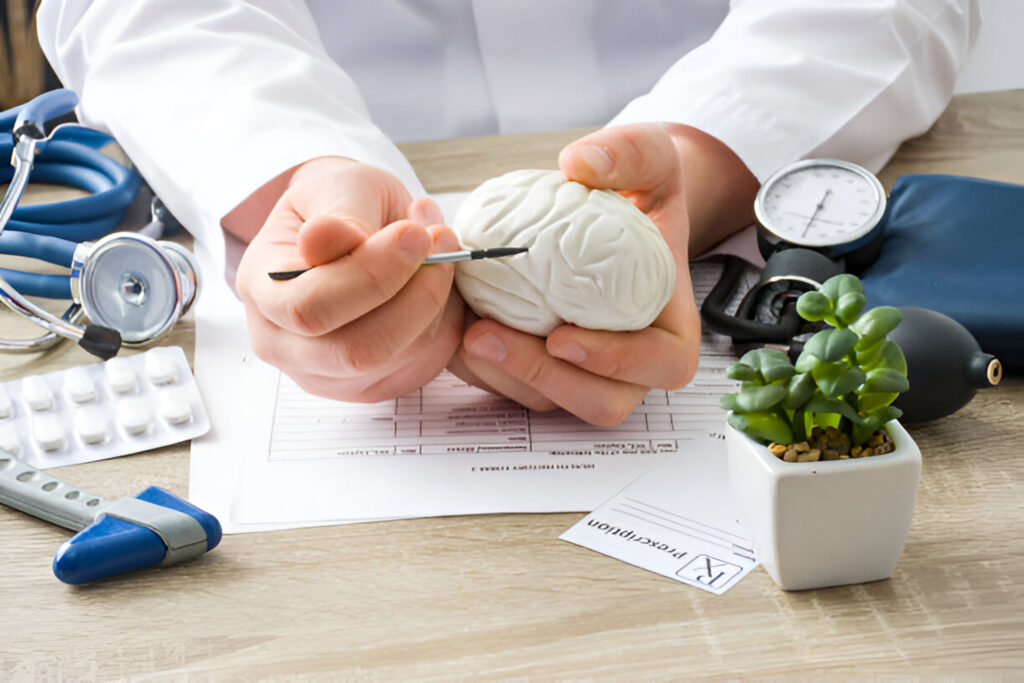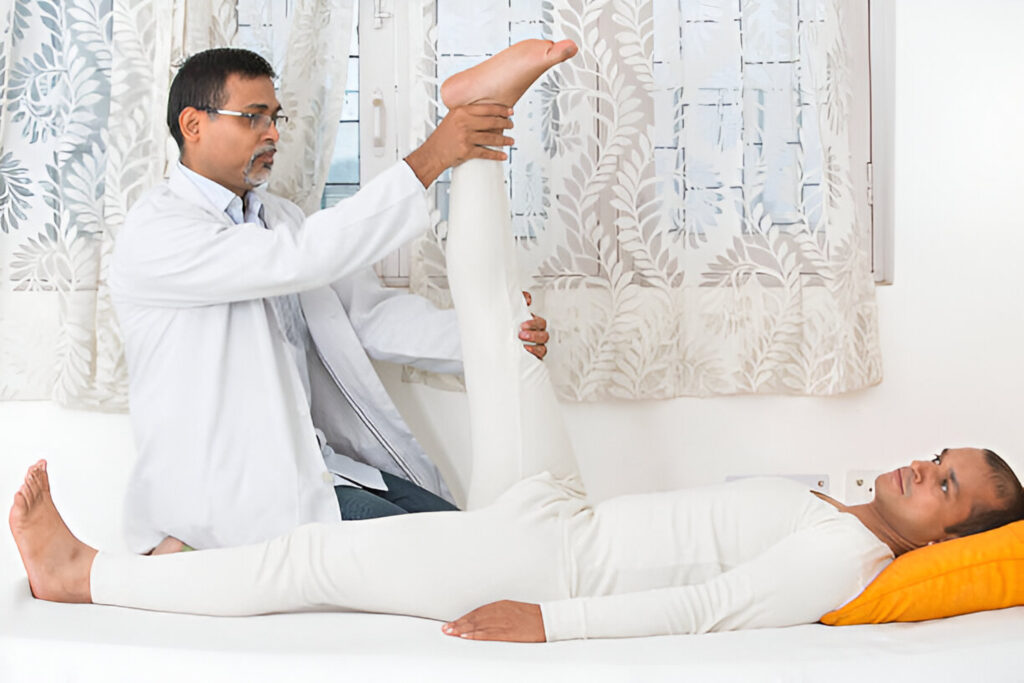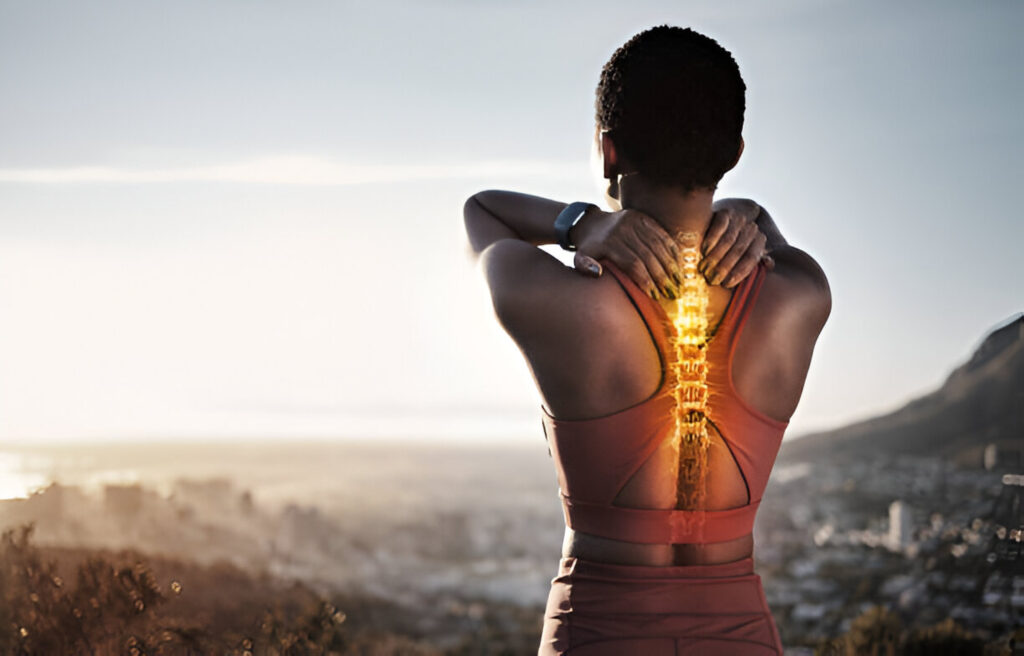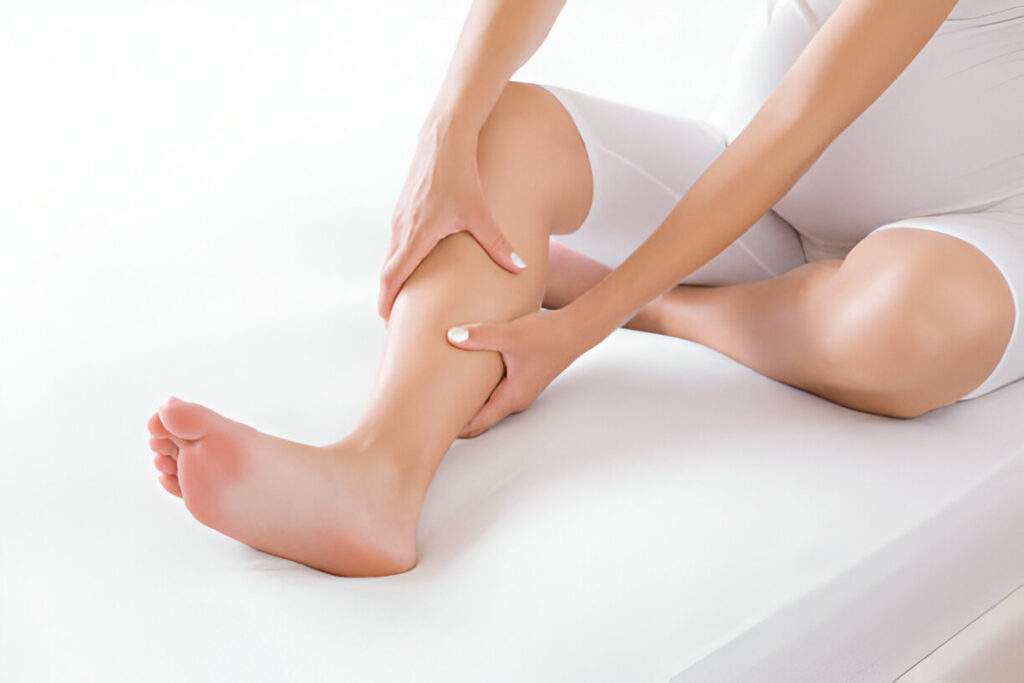
Stroke
- Overview: A stroke occurs when the blood supply to part of the brain is interrupted or reduced, preventing brain tissue from getting oxygen and nutrients. Brain cells begin to die within minutes.
- Symptoms: Sudden numbness or weakness, especially on one side of the body, confusion, trouble speaking, vision problems, difficulty walking, and severe headache.
- Rehabilitation: Rehabilitation focuses on restoring as much function as possible and may include physical therapy, occupational therapy, speech therapy, and lifestyle changes to prevent future strokes.

Parkinson’s Disease
- Overview: Parkinson’s disease is a neurodegenerative disorder that affects movement. It develops gradually, sometimes starting with a barely noticeable tremor in just one hand.
- Symptoms: Tremors, stiffness, slowness of movement (bradykinesia), impaired balance, and changes in speech and writing.
- Rehabilitation: Physical therapy focuses on improving mobility, flexibility, and balance. Speech therapy helps with speech and swallowing issues. Occupational therapy can assist with daily tasks.

Spinal Injuries
- Overview: Spinal cord injuries involve damage to the spinal cord that results in a loss of function, such as mobility or feeling. The severity and location of the injury determine the extent of the disability.
- Symptoms: Symptoms depend on the level and severity of the injury and can range from partial to complete loss of sensation and motor control.
- Rehabilitation: Rehabilitation includes physical therapy to improve strength and mobility, occupational therapy for daily tasks, and sometimes assistive devices or technologies to enhance independence.

Vestibular Rehabilitation
- Overview: Vestibular rehabilitation is a specialized form of therapy intended to alleviate problems caused by vestibular disorders, which affect balance and spatial orientation.
- Symptoms: Dizziness, vertigo, balance problems, unsteadiness, and sometimes visual disturbances.
- Rehabilitation: Therapy involves exercises that promote gaze stabilization, balance, and coordination. It aims to reduce symptoms of dizziness and improve balance by retraining the brain to process signals from the vestibular system more effectively.
